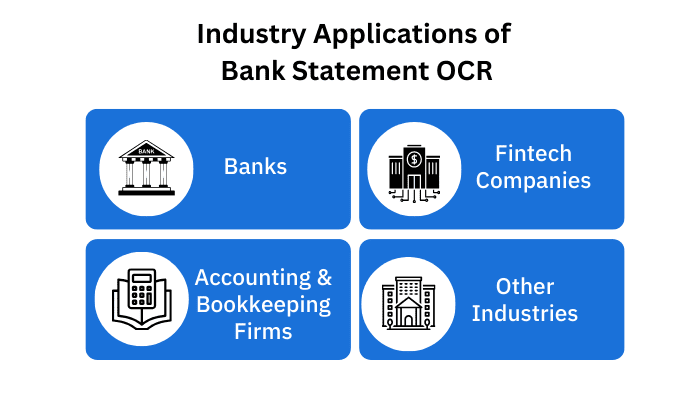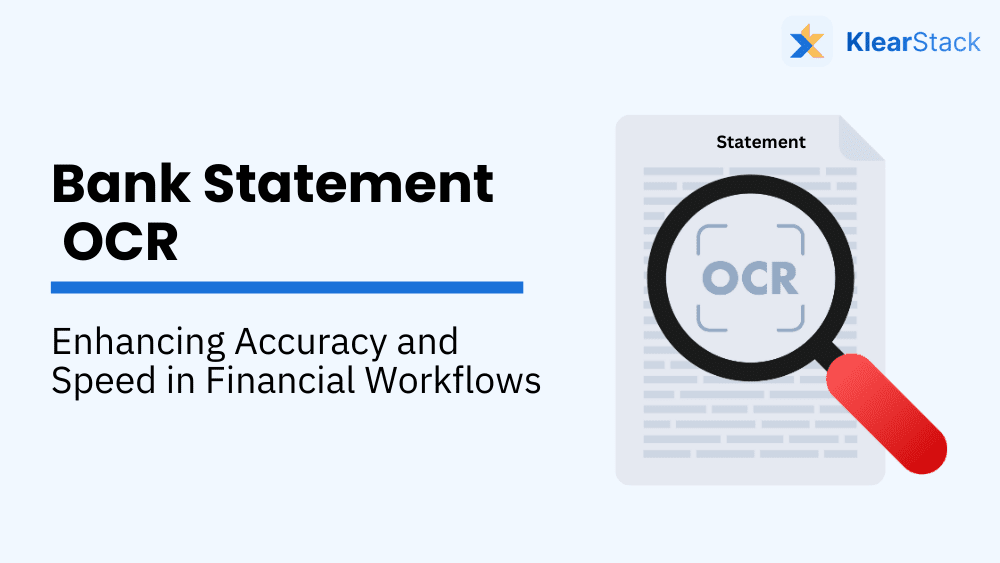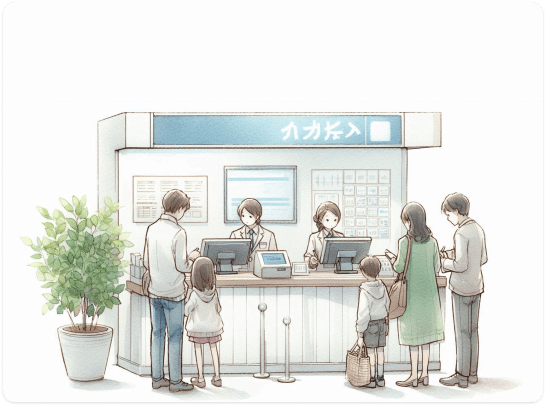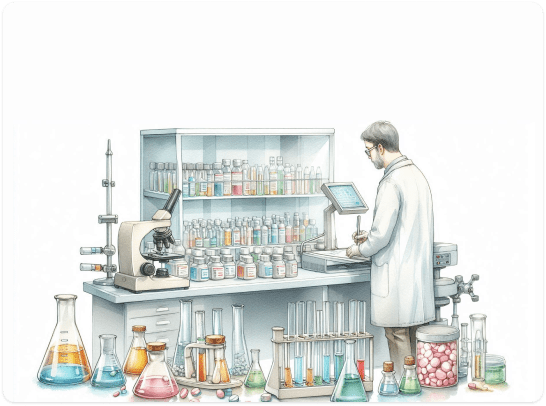Is manual bank statement processing hindering your team’s productivity and accuracy? The sheer volume of paper or digital statements can overwhelm even the most diligent staff. Data entry errors, compliance risks, and missed opportunities are all too common.
Bank Statement OCR (Optical Character Recognition) presents a powerful solution. By converting printed or scanned statements into structured, machine-readable data, it eliminates the need for manual input. This translates to significant time savings, improved accuracy, and enhanced operational efficiency. This automation is a prime example of Intelligent Document Processing (IDP), streamlining document-centric workflows.
Bank Statement OCR offers more than just data extraction. It allows financial institutions, accounting firms, and businesses to automate workflows, make informed decisions, and mitigate risks.
This blog post provides a comprehensive overview of Bank Statement OCR. We’ll explore how it works, its key benefits, and real-world applications. You’ll also learn about the OCR to Excel process, key technologies, and KlearStack’s solution for effortless data extraction.
Why Bank Statement OCR Matters?
Manual bank statement processing is no longer a viable and sustainable option in today’s competitive business environment. The importance of OCR in finance and specifically for bank statements cannot be overstated. Manual processes are inefficient, error-prone, and expensive. Bank Statement OCR presents an alternative, offering significant advantages across various industries. Bank Statement OCR isn’t just a technological upgrade; it’s a strategic imperative for organizations striving for success.
Boost Efficiency and Productivity:
- Eliminate Manual Data Entry: Say goodbye to tedious, time-consuming data entry tasks. OCR automates the extraction process, freeing your staff for higher-value activities.
- Accelerate Workflows: Speed up loan approvals, financial reporting, and audit processes. OCR enables faster data analysis and decision-making.
- Reduce Operational Costs: Minimize labor costs associated with manual data entry and processing. OCR improves resource allocation and optimizes your bottom line.
Ensure Accuracy and Compliance:
- Minimize Errors: Human errors are inevitable in manual data entry. OCR ensures precise data extraction, reducing the risk of costly mistakes.
- Facilitate Regulatory Compliance: Meet stringent reporting requirements with accurate and auditable data. OCR helps you stay ahead of regulatory changes and avoid penalties.
- Enhance Fraud Detection: Analyze transaction patterns and identify anomalies more effectively with structured, machine-readable data. OCR strengthens your fraud prevention efforts.
Gain a Competitive Advantage:
- Improved Customer Experience: Faster loan approvals, efficient onboarding, and personalized financial insights create a positive customer experience.
- Data-Driven Decision Making: Access clean, structured data for in-depth analysis and informed business decisions. OCR reveals valuable insights hidden within your bank statements.
- Stay Ahead of the Curve: Adopt automation and innovation to remain competitive. OCR helps you adapt to evolving market demands and outperform your rivals.

Why Zero-Day Accuracy is Crucial for Bank Statement Data Extraction
Financial data demands precision. Every transaction, every balance, and every piece of account information matters. That’s why zero-day accuracy—the ability to accurately extract data from bank statements without prior training or templates—is critical.
The Stakes of Inaccurate Data:
Errors in bank statement data extraction can have cascading effects:
- Faulty Loan Decisions: Inaccurate income or debt information leads to incorrect loan approvals or denials, impacting both lenders and borrowers.
- Compliance Violations: Regulatory reporting demands precision. Even minor errors trigger compliance issues and penalties.
- Missed Fraud Detection: Undetected suspicious transactions result in financial losses and reputational damage.
Zero-Day Accuracy: The Ideal Solution:
Traditional OCR solutions rely on training or templates to recognize specific statement formats. This approach is rigid, time-consuming, and struggles with new layouts or variations.
Zero-day accuracy eliminates these limitations and transforms the process. Your system can:
- Handle Diverse Formats: Extract data accurately from any bank statement, regardless of the financial institution or account type.
- Adapt to Changes: Adapt to changes in formats, fonts, or terminology without manual adjustments.
- Reduce Onboarding Time: Start extracting data immediately, without the need for lengthy training or configuration.
Pros and Cons of Zero-Day Accuracy:
Pros:
- Speed: Accelerates data extraction and analysis, enabling faster decision-making.
- Accuracy: Minimizes errors, leading to more reliable insights and reduced compliance risks.
- Flexibility: Handles diverse and evolving bank statement formats with ease.
- Scalability: Ideal for organizations with high volumes of bank statements from various sources.
Cons:
- Initial Investment: This may require a more advanced and sophisticated OCR solution.
- Complexity: Implementing and fine-tuning a zero-day accuracy system can be challenging.
Prioritizing zero-day accuracy depends on your needs. If accuracy, efficiency, and scalability are paramount, investing in a zero-day OCR solution like KlearStack can deliver substantial benefits and protect your organization from the risks of inaccurate data.
Extracting Valuable Insights: Data Fields from Bank Statements
Bank statements contain a wealth of financial information, and OCR technology provides access to this valuable data. KlearStack’s solution extracts key data fields accurately, facilitating in-depth analysis and informed decision-making.
Core Account & Statement Details:
- Account Holder Name and Address: Verify customer identity and maintain accurate records.
- Account Number and Type: Identify specific accounts and their associated transactions.
- Statement Date and Period: Track financial activity over time and monitor account balances.
- Beginning and Ending Balances: Analyze changes in account balances and identify trends.
- Currency Type: Identify the currency in which the account is denominated, important for international transactions or multi-currency accounts.
Transaction-Level Data:
- Transaction Date: Pinpoint the exact timing of deposits, withdrawals, and other activities.
- Transaction Description or Memo: Understand the nature of each transaction (e.g., ATM withdrawals, bill payments, transfers).
- Transaction Amount: Track income and expenses and identify any discrepancies or unusual activity.
- Running Balance: Monitor the account balance after each transaction.
Additional Information:
- Bank Name and Branch: Identify the financial institution associated with the statement.
- Interest Earned or Charged: Track interest income on savings accounts or interest expenses on loans and credit cards.
- Fees and Charges: Monitor bank fees and identify opportunities for cost savings.
- Contact Information: Access bank contact details for inquiries or customer service.
Advanced Extraction Capabilities:
- Check Numbers: Extract check numbers for efficient payment tracking and reconciliation.
- Transaction Categories: Automatically categorize transactions based on descriptions or merchant codes.
- Merchant Names: Identify the businesses involved in each transaction.
- Payee Information: Capture payee names and addresses for further analysis or verification.
Industry Applications of Bank Statement OCR
Bank statement OCR isn’t limited to a single application; its benefits span numerous industries. Let’s explore some key use cases.

Financial Institutions:
1. Banks:
- Loan Processing and Underwriting: Accelerate loan approvals by automating income verification, debt assessment, and risk analysis. OCR cuts the need for manual data extraction in banking documents and manual reviews, speeding up decision-making.
- Fraud Detection and Prevention: Analyze transaction patterns, identify anomalies, and flag suspicious activity in real time. OCR strengthens your defenses against fraud and protects your institution and customers.
- Regulatory Compliance: Generate accurate reports and audits effortlessly. OCR ensures compliance with stringent regulations like Dodd-Frank and BSA/AML, reducing the risk of penalties.
- Customer Onboarding: Streamline onboarding processes by automating data extraction from bank statements. Improve customer experience and accelerate account opening.
2. Fintech Companies:
- Payment Processors: Speed up transaction reconciliation and improve fraud detection with real-time data extraction from bank statements. OCR allows for the efficient handling of high transaction volumes.
- Personal Finance Apps: Provide users with seamless financial management and insights by aggregating data from multiple bank statements. OCR enables accurate and comprehensive financial tracking.
3. Accounting & Bookkeeping Firms:
- Client Onboarding: Efficiently collect and process clients’ financial data, including bank statements. OCR eliminates manual data entry and speeds up onboarding.
- Reconciliation and Reporting: Automate matching bank statements with accounting records, reducing errors and saving time. OCR ensures accurate and timely financial reporting.
- Tax Preparation: Simplify tax filing for individuals and businesses by extracting income and expense data from bank statements. OCR improves accuracy and reduces the risk of audits.
4. Other Industries:
- Real Estate: Verify rental income and financial stability of potential tenants. OCR accelerates the screening process and reduces the risk of fraud.
- Legal: Analyze financial records for litigation or dispute resolution. OCR provides quick access to relevant data and streamlines evidence gathering.
- Insurance: Assess risk and process claims more efficiently by extracting data from bank statements. OCR improves underwriting accuracy and accelerates claims settlements.
OCR Bank Statements to Excel: Converting Data into Actionable Insights
Extracting valuable data from bank statements is only the first step. To truly leverage its potential, you need to convert it into a format that’s easy to analyze and work with. That’s where converting OCR bank statements to Excel comes in. The ability to convert OCR bank statements to Excel bridges the gap between unstructured data and actionable insights.
1. Steps to Convert OCR Bank Statements to Excel
While the exact process may vary depending on the OCR software you’re using, the general steps are as follows:
- Scan or Upload Statements: If you have paper statements, scan them into digital format (PDF). Alternatively, upload digital statements directly to the OCR software.
- Process with OCR: Run the OCR software to extract data from the bank statements. The software will identify and recognize key data fields, such as dates, amounts, descriptions, etc.
- Export to Excel: Once the OCR process is complete, export the extracted data to an Excel file (.xlsx or .csv format).
- Review and Clean Data: Open the Excel file and review the extracted data for accuracy. Correct any errors or inconsistencies, and make sure the data is properly formatted.
- Analyze and Utilize Data: Leverage Excel’s powerful tools to analyze the data, create reports, and generate actionable insights.
Key Technologies Driving Bank Statement Data Extraction
Behind the scenes of seamless bank statement data extraction lies a powerful combination of advanced technologies. Let’s explore the key ones that make it all possible.
1. Optical Character Recognition (OCR):
- The Foundation: OCR is the core technology that converts printed or scanned text into machine-readable data. It analyzes the visual patterns of characters and translates them into digital text.
- Advanced OCR: Modern OCR systems employ machine learning and AI to improve accuracy and handle diverse fonts, layouts, and image quality.
- Template-Free OCR: Sophisticated solutions, like KlearStack, go beyond templates, allowing for zero-day accuracy and adaptability to new statement formats.
2. Image Processing Techniques:
- Optimizing Data Extraction: Image processing techniques, such as image enhancement, noise reduction, and skew correction, improve the quality of scanned or photographed bank statements, leading to more accurate OCR.
- Table and Structure Recognition: Advanced image processing algorithms can identify and extract data from tables, charts, and other structured elements within bank statements, further improving data accuracy and completeness.
3. Machine Learning (ML) and Artificial Intelligence (AI):
- Intelligent Data Extraction: ML algorithms learn from vast datasets to recognize patterns and extract relevant information from bank statements.
- Contextual Understanding: AI allows systems to interpret the meaning and context of extracted data, improving accuracy and reducing errors.
- Continuous Improvement: ML models learn and adapt over time, improving their performance and accuracy with each processed statement.
4. Natural Language Processing (NLP):
- Understanding Text: NLP algorithms analyze the textual content of bank statements, deciphering transaction descriptions, merchant names, and other relevant information.
- Data Categorization: NLP allows for the automatic categorization of transactions based on their descriptions, simplifying analysis and reporting.
- Sentiment Analysis: Advanced NLP techniques can even identify sentiment or emotions expressed in transaction memos, providing additional insights.
5. Barcode Recognition:
- Streamlining Data Entry: Barcode recognition technology can quickly and accurately capture data encoded in barcodes found on bank statements, automating data entry and reducing manual effort.
6. Cloud-based Data Processing:
- Scalability and Flexibility: Cloud computing allows for the efficient and cost-effective processing of large volumes of bank statements without the need for on-premise infrastructure.
- Accessibility and Collaboration: Cloud-based solutions provide easy access to data and facilitate collaboration among team members, regardless of location.
7. API (Application Programming Interface) and SDK (Software Development Kit) Integration:
- Seamless Connectivity: APIs and SDKs allow for easy integration of bank statement OCR capabilities into existing systems and workflows, improving automation and data flow.
8. Data Validation and Verification:
- Error Detection and Correction: Built-in validation checks identify and correct inconsistencies or errors in extracted data, ensuring accuracy and reliability.
- Fuzzy Matching and Deduplication: Identify and merge duplicate entries or variations in data, improving data quality and consistency.
9. Secure Data Handling and Encryption:
- Protecting Sensitive Information: Robust security measures and encryption protocols safeguard confidential financial data during processing and storage.
- Compliance with Regulations: Adherence to data privacy regulations like the General Data Protection Regulation (GDPR) and the California Consumer Privacy Act (CCPA) ensures responsible and ethical data handling.
8 Steps Guide to Extract Data from Banking Statements
KlearStack is a template-free data extraction software that uses advanced technologies to process bank statements and structure the data in the desired format. It saves thousands of hours and delivers output with up to 99% accuracy. Here is a step-by-step guide to extracting data using KlearStack:
Step 1: Register/login to the software
- Once you successfully register with KlearStack as a user, you will get access to the login credentials. Upon entering these, read the terms and conditions carefully, and tick the check box. After this, you can log in to the dashboard, where all the wonders of data extraction start!
Step 2: View the dashboard to upload the documents
- Once logged in, you will see the dashboard from where different documents can be uploaded. From here, you can add and process various documents, including bank statements, invoices, bills, purchase orders, receipts, and over 12 other document types.
- KlearStack also has an excellent feature that allows bulk processing of the documents, which means you can upload multiple documents and it will process all of those simultaneously giving you speedy and meticulous results.
Step 3: Upload the Bank Statement
- Click on the ‘Add new’ tab. KlearStack allows you to upload documents in different formats such as Electronic PDF, Word, Excel, JPG, BMP, TIFF, PNG or Image, scanned PDF, and ZIP.
Step 4: Select the document type
- Here you can browse your document and upload from sources available.You also have an option to select if the document is for a B2B or B2C transaction. This ensures better categorization and storage of your data and streamlines your further process of data collection when it comes to final reporting.
- Click on Done to proceed.
Step 5: View the added document
- Your most recently uploaded document will appear on top. Uploaded documents with their extracted data appear here, providing a quick snapshot of all necessary information at any given time
Step 6: Click to check the extracted data
- For detailed information you can click on the uploaded document, you will see all the fields on one part of the screen and the uploaded document on the other. Here you can scroll and check all the extracted data.
- If you wish to understand where the information has been picked from, simply click on that particular field and it will get highlighted on the uploaded document. If the information is incorrect, you can edit it here. This will retrain the model for future bank statements. Once done, click on ‘Save’.
Step 7: Click on approve
- Once you’ve verified the details are correct, click on “Approve.” The models are trained to capture data quickly and accurately.
Step 8: View the document on the dashboard
- Once approved, go back to the dashboard and you will see your document there with the approval sign. Here you will be able to see all the documents and data extraction done from each.
Eliminate Manual Data Entry Errors and Compliance Risks with KlearStack’s Bank Statement OCR
Manual bank statement processing is a burden on your team and a risk to your business. Inaccurate data, missed deadlines, and compliance violations have serious consequences. KlearStack’s intelligent OCR technology eliminates these challenges, automating data extraction with unparalleled accuracy and efficiency.
Our advanced solution goes beyond basic OCR, handling complex statement formats and delivering structured, actionable data. Say goodbye to tedious manual entry, time-consuming reconciliations, and the constant worry of errors with KlearStack. Stay ahead with the latest trends and techniques in data extraction. Book a DEMO Call now to troubleshoot your problems and increase efficiency by 500%, while saving 80% on document data entry and auditing costs.
OCR (Optical Character Recognition) in banking digitizes printed/handwritten text from documents (checks, statements) into machine-readable data, eliminating manual entry and streamlining processes like account opening and loan approvals.
OCR in bank statements extracts key details (account numbers, transactions, balances) from statements, enabling faster, more accurate data processing for improved efficiency, cost reduction, and enhanced customer service.
The “best” OCR depends on needs, but KlearStack’s template-free approach and high accuracy stand out. It extracts data from various formats, handles complexity, and adapts, ensuring reliable processing for financial entities







